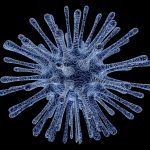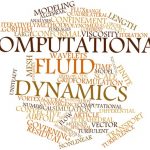
Pulsed Electric Field Processing (PEF) is no longer an ’emerging technology’, it has emerged! The technology is used for a number of purposes. Primarily, the pasteurisation of liquid and semi-liquid food products by inactivating micro-organisms with short, high voltage electric pulses. Other objectives include improving the extraction of bioactives and of juice from fruit. The only type of product that is not effectively treated are solid, dry foods including meats although this aspects is now being addressed.
In the academic literature, a number of reviews are available that cover this method of processing (Jeyamkondan et al., 1999; Barbosa-Cánovas & Altunakar, 2006; Toepfl et al., 2014; Kumar et al., 2015; Dunn, 2019) .
Unlike conventional pasteurisation, it is a non-thermal method of processing, and so the retention of quality aspects, such as flavour and nutritional properties, is much improved upon, giving minimal or no losses to these aspects. It is suggested that it can have minimal or no detrimental effect on food quality, retaining the fresh flavour, nutritional value and ensuring shelf-life is retained as long as possible.
The rival technology in the non-thermal processing of liquid foods is high pressure processing (HPP), pulsed electric field processing, high-voltage processing, cold plasma technology and also aseptic membrane filtration processing. At the moment, HPP is the method of choice although it does not have the capabilities of operating continuously that PEF possesses.
Operation of PEF
The mechanics of PEF relies on generating a high voltage pulse – a form of disturbance moving through a medium from one point to the next. These are extremely short bursts, usually less than a second. The pulse is thus an energy disturbance transmitted throughout the medium. Such a level of treatment means a reduced heating effect and the energy lost in heating the food is soon dissipated.
Materials are usually exposed to high voltage pulsed electric fields between 10 kV/cm to 80 kV/cm. The process requires pulsed electrical currents between a set of electrodes. The distance between these electrodes is the treatment gap in a PEF chamber. Applying a high voltage generates an electric field that leads to microbial inactivation.
PEF equipment requires a high voltage pulse generator with a treatment chamber, a system for fluid handling and attendant monitoring and controlling devices. The product to be treated is placed in the treatment chamber in either a batch or continuous design. The two electrodes are connected together using a nonconductive material to prevent electrical flow from one to another. The food product experiences a force per unit charge, an electrical field that produces irretrievable destruction of the cell membrane in microorganisms.
The Beginnings Of PEF
The development of electric field processing earnestly began in the 1960s. Sale and Hamilton (1967a,b & 1968) studied biochemical aspects of applied electric fields to microorganisms which began to spark further interest.
In the 80s and early 90s, the lethal effects of PEF caught the attention of food processors looking for a non-thermal pasteurisation process. It was clear that vegetative cells and yeasts could be destroyed but not spores (Hulsheger & Niemann, 1980; Gupta and Murray, 1988). Hulsheger & Niemann (1980) reported that high-voltage capacitor discharges into a suspension of E.coli K12 almost had 100% success in destruction. The destruction was helped by the concomitant generation of chlorine gas when salt was present. The cell concentration had a profound effect on the success of the technology.
Electroporation
The key weakness of the microorganism is strangely its cell membrane which shows considerable electro-mechanical instability when exposed to a pulsed electric field.
The mechanism by which pulsed electric field processing works is based on electroporation. It produces ‘holes’ in microorganisms which destroy the proton gradients that enable them to generate energy and to increase their general porosity so they are unable to control the barriers to substrates.
Inactivation of Microorganisms
The range of applications and the degree of success of PEF is very well documented and there are probably very few applications left that remain unexplored. Most applications compare the performance of PEF with the equivalent thermal treatment to explore the differences in lethality and the quality of the product produced. In all cases, the quality of the treated product from PEF is rarely altered except for a few instances.
PEF is often added as an additional hurdle to others and there will be examples cited here which illustrate its position in the overall scheme of food processing.
Few microorganisms are immune to the damaging impact of PEF. In juices, PEF will destroy yeasts as well as bacteria which is an important feature in preventing further fermentation.
The technique has been applied to the treatment of many different fruit juices including cranberry juice (Jin & Zhang, 1999), apple juice (Evrendilek et al., 1999), orange juice (Yeom et al., 2000), tomato juice (Min et al., 2003). Orange juice is a very popular product to examine when alternative and novel non-thermal and thermal technologies are being examined.
Dairy products, especially milk, have also been examined (Walking-Ribeiro et al., 2009). An example is presented here in combining PEF with thermal processing to improve upon conventional dairy processing. Similar studies have been studied with skimmed milk (Calderon-Miranda et al., 1999).
Yeom et al., (2000) compared pasteurization of orange juice at 94.6C for 30 seconds with PEF treatment at 35 kV/cm for just 59 microseconds. As well as preventing microorganism growth in both cases, so was the activity of the enzyme pectin methyl esterase (PME) suppressed to some extent with only 12% activity retained. The impact of PEF was explored further on PME activity (Yeom et al., 2002) whereby increasing electric field strength increasingly denatured and thus deactivated PME although the heating effect on orange juice concomitantly rose.
The PEF treated orange juice suffered less browning whilst other quality factors were virtually unchanged. Heat pasteurization apparently produced larger particle sizes than in the PEF treated juice which is largely unexplained.
Investigations On Specific Microorganisms
PEF has been examined on the performance of the technology against specific microorganisms in model systems (Mosqueda-Melgar et al., 2008).
All the key microorganisms include Listeria innocua, Salmonella Typhimurium, E. coli O157:H7, Bacillus cereus, Staphylococcus aureus, Yersinia enterocolitica, and Campylobacter jejuni
A five-log reduction of E. coli O157:H7 and E.coli 8739 can be achieved in apple juice (Evrendilek et al., 1999). The microorganism Salmonella senftenberg is specifically examined in a fermentation broth (Álvarez et al., 2000).
Wine And Fermentation
The must used to produce a white wine from the white grape cv. Garganega was pre-treated using PEF to see what effect it would have on the quality of the wine (Comuzzo et al., 2018). A group based at various institutes and universities in Italy found pre-treatment did not change the composition of either must or wine, nor alter the nature of the fermentation. What it did do was improve the release of aroma precursors and colour pigments – the anthocyanins. The implication was a wine with more intense colour and a better phenolics composition which are often important components as antioxidants. It suggests the technology will improve the stability of the wine.
Effect On Food Structure
One study from New Zealand found that pulsed electric field treatments of whole roots could modify their cell texture and structure (Liu et al., 2018). Oca (Oxalis tuberosa) was treated by PEF at different field strengths up to 1.2 kV/cm. A treatment above 0.5 kV/cm softened the tubers but the effect was uneven because of the various cellular differences in different parts of the root. Generally the cell structure remained intact irrespective of the strength of the applied field. The starch grains which are an important nutritional component of Oca was retained. PEF did however reduce oxalate by half with the potential for producing low oxalate foods. It is possible other components might have leached away but it’s not clear if this was reported in the research. The application could be applied to other vegetables and plant foods like Taro and rhubarb for example.
One study look at PEF benefits on potatoes intended for deep-fat frying (Ignat et al., 2018). In this case it was found that PEF technology could improve a number of aspects of potatoes by modifying its structure enough to improve performance during frying. Cubes of potato were given 9000 pulses at 0.75 kV/cm electric field or 810 pulses at 2.50 kV/cm electric field which amounted to 18.9 kJ/kg. This processing improved moisture retention in the potato but softened the tissue with no changes to the overall appearance of the cubes. One important health aspect:- there was lower oil absorption during the frying process compared to potato cubes that were blanched or dipped in water. The authors think that PEF induced electroporation which is a form of creating a leaky structure where compounds including water can leach away. There was a lower level of browning during frying which might be due to the leaching of reducing sugars from the surface of the cubes.
The research makes the point that pre-treatment with PEF could help fryers by reducing their levels of chemicals, time for frying, general water and energy consumption. they also reckon it might improve mass transfer during frying, with better browning and perhaps from a health point to view – reduced oil uptake.
Actually potatoes are popular vegetables for examination. The Institute of Food Technology at the University of Natural Resources and Life Sciences (BOKU) in Vienna, Austria also examined PEF treatment on large-scale French fries production (Fauster et al., 2018). In this case, very low PEF energy intensity produced beneficial effects. The cutting of the fries into long strips was improved and there was less starch lost from the structure with less uptake of oil during frying.
The cutting process is important in french fries because a high degree of feathering occurs. PEF reduced the feathering effect to 20 per cent when compared to conventionally treated French fries. Potato peeling and the rheology of puree was unaffected which implies mashing would not be affected. Lumping in the puree appeared to be worse however due to PEF treatment. In this study, French fries production was improved with a better chip quality.
References
Álvarez, I., Raso, J., Palop, A., & Sala, F. J. (2000). Influence of different factors on the inactivation of Salmonella senftenberg by pulsed electric fields. International Journal of Food Microbiology, 55(1-3), pp. 143-146.
, , , , & (2019). Effect of pulsed light on shelf life of chill stored yellowfin tuna (Thunnus albacares) steaks. Indian Journal of Fisheries, 66(4), pp. 125–134 (article)
, , & (2018). Effect of pulsed light treatments on quality and antioxidant properties of fresh-cut strawberries. Food Chemistry, 264, pp. 393–400 (Article)
Barbosa-Cánovas, G. V., & Altunakar, B. (2006). Pulsed electric fields processing of foods: an overview. Pulsed electric fields technology for the food industry: Fundamentals and applications, pp. 3-26
Calderón-Miranda, M.L., Barbosa-Cánovas, G.V., Swanson, B.G. (1999) Inactivation of Listeria innocua in skim milk by pulsed electric fields and nisin. Int. J. Food Microbiol. Oct 1;51(1) pp. 19-30. doi: 10.1016/s0168-1605(99)00069-0. PMID: 10563460.
Comuzzo, P., Marconi, M., Zanella, G., Querze, M. (2018) Pulsed electric field processing of white grapes (cv. Garganega): Effects on wine composition and volatile compounds. Food Chem. 264 pp. 16-23 (Article)
Dunn, J. (2019). Pulsed electric field processing: an overview. Pulsed electric fields in food processing, pp. 1-30
Evrendilek, G.A., Zhang, Q.H., Richter, E.R. (1999). Inactivation of E. coli O157:H7 and E. coli 8739 in apple cider by pulsed electric fields. J Food Prot. 62(7) pp. 793-796 .
Fauster, T., Schlossniki, D., Rath, F., Ostermeier, R., Teufel, F., Toepfl, S., Jaeger, H. (2018) Impact of pulsed electric field (PEF) pretreatment on process performance of industrial French fries production. J. Food Engineering. 235 pp. 16-22 (Article)
Fernandez, M. and Hierro, E. 2016. Microbial inactivation on foods by pulsed light. In: Pataro, G. and Lyng, J. (Eds.), High intensity pulsed light in processing and preservation of foods. Nova Science Publishers, Inc., New York, USA, p. 131-161.
Figueroa-Garcia, J. E., Silva, J. L., Kim, T., Boeger, J., Cover, R. 2002. Use of pulsed-light to treat raw channel catfish fillets. J. Miss. Acad. Sci., 47 (2): pp. 114-120
Hülsheger, H., & Niemann, E. G. (1980). Lethal effects of high-voltage pulses on E. coli K12. Radiation and environmental biophysics, 18, pp. 281-288.
Ignat, A., Manzocco, L., Brunton, N.P., Nicoli, M.C. & Lyng, J.G. (2018) The effect of pulsed electric field pre-treatments prior to deep-fat frying on quality aspects of potato fries. 29 pp. 65-69 (Article)
, (1999). Pulsed electric field inactivation of microorganisms and preservation of quality of cranberry juice. J Food Process Preserv. 23(6) pp. 481– 97 (Article)
Keklik, N. M., Demirci, A. and Puri, V. M. 2010. Decontamination of unpackaged and vacuum-packaged boneless chicken breast with pulsed ultraviolet light. Poult. Sci., 89: 570-581. doi: 10.3382/ps.2008-00476
Kumar, Y., Patel, K. K., & Kumar, V. (2015). Pulsed electric field processing in food technology. International Journal of Engineering Studies and Technical Approach, 1(2), pp.6-17.
Liu, T., Burritt, D.J., Eyres, G.T., Oey, I. (2018) Pulsed electric field processing reduces the oxalate content of oca (Oxalis tuberosa) tubers while retaining starch grains and the general structural integrity of tubers. Food Chem., 245 pp. 890-898 (Article)
Min, S., Jin, Z. T., & Zhang, Q. H. (2003). Commercial scale pulsed electric field processing of tomato juice. Journal of Agricultural and Food Chemistry, 51(11), pp. 3338-3344
Mosqueda-Melgar, J., Elez-Martínez, P., Raybaudi-Massilia, R.M., Martín-Belloso, O. (2008) Effects of pulsed electric fields on pathogenic microorganisms of major concern in fluid foods: a review. Crit. Rev. Food Sci. Nutr. Sep;48(8) pp. 747-59. doi: 10.1080/10408390701691000. PMID: 18756397.
Nicorescu, I., Nguyen, B., Chevalier, S. and Orange. N. 2014. Effect of pulsed light on the organoleptic properties and shelf life extension of pork and salmon. Food control., 44: pp. 138-145. doi.org/10.1016/j.foodcont.2014.03.052 .
Oms-Oliu, G., Martín-Belloso, O. and Soliva-Fortuny, R. 2010. Pulsed light treatments for food preservation. A review. Food Bioproc. Technol., 3: pp. 13-23. DOI: 10.1007/s11947-008-0147-x.
Ortega-Rivas, E. 2012. Pulsed light technology. In: Non-thermal food engineering operations, Food Engineering Series. Springer Science C Business Media, New York, USA, p. 263-273 .
Qin, B. L., G. V. Barbosa-Canovas, B. G. Swanson, P. D. Pedrow, and R. G. Olsen. 1995. A continuous treatment system for inactivating microorganisms with pulsed electric fields, p. 1345–1352. 1991 IEEE Ind. Appl. Soc. Annu. Meet. IEEE, Piscataway, N.J.
Qin, B. L., F. J. Chang, G. V. Barbosa-Canovas, and B. G. Swanson. 1995. Nonthermal inactivation of Saccharomyces cerevisiae in apple juice using pulsed electric fields. Lebensm.-Wiss. Technol. 28:564–568.
Qin, B. L., U. R. Pothakamury, H. Vega, O. Martin, G. V. BarbosaCanovas, and B. G. Swanson. 1995. Food pasteurization using highintensity pulsed electric fields. Food Technol. 49(12):55–60.
Qin, B. L., Q. Zhang, and G. V. Barbosa-Canovas. 1994. Inactivation of microorganisms by pulsed electric fields of different voltage waveforms. IEEE Trans. Dielec. Elect. Ins. 1:1047–1057.
Qin, B. L., Q. Zhang, G. V. Barbosa-Canovas, B. G. Swanson, and P. D. Pedrow. 1995. Pulsed electric field treatment chamber design for liquid pasteurization using a finite element method. Trans. ASAE 38 pp. 557–565
Sale, A. J. H., and W. A. Hamilton. (1967a). Effects of high electric fields on microorganisms. I. Killing of bacteria and yeasts. Biochim. Biophys. Acta 148 pp. 781–788.
Sale, A. J. H., and W. A. Hamilton. (1967b). Effects of high electric fields on microorganisms. II. Mechanisms of action of the lethal effect. Biochim. Biophys. Acta 148 pp. 789–800.
Sale, A. J. H., and W. A. Hamilton. (1968). Effects of high electric fields on microorganisms. III. Lysis of erythrocytes and protoplasts. Biochim. Biophys. Acta 163 pp. 37–43
Toepfl, S., Siemer, C., Saldaña-Navarro, G., & Heinz, V. (2014). Overview of pulsed electric fields processing for food. In Emerging technologies For Food Processing (pp. 93-114). Academic Press.
, , , , . (2009). Antimicrobial effect and shelf-life extension by combined thermal and pulsed electric field treatment of milk. J Appl Microbiol 106(1): pp. 241– 8 (Article)
Yeom, H.W., Streaker, C.B., Zhang, Q.H, Min, D.B. (2000). Effects of pulsed electric fields on the quality of orange juice and comparison with heat pasteurization. J. Agric. Food Chem. 48(10) pp. 4597-605 (Article)
Yeom, H. W., Zhang, Q. H., & Chism, G. W. (2002). Inactivation of pectin methyl esterase in orange juice by pulsed electric fields. Journal of Food Science, 67(6), pp. 2154-2159



Leave a Reply